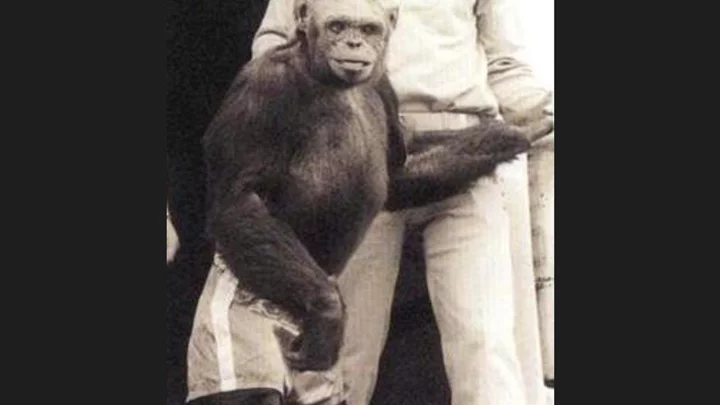
Doctor says scientists secretly made a ‘humanzee’ by mixing humans with chimps
Chimpanzees are our closest relatives, so it’s not surprising that they can do many of the things that we can. They’re able to create tools and can even use sign language, plus they share 98.8 per cent of their DNA with humans. It is, therefore, no wonder that the question has often been asked: could humans and chimps ever produce offspring? The answer, according to one evolutionary psychologist, is yes – and it’s already happened. Gordum Gallup made the eyebrow-raising claims in an interview with The Sun Online back in 2018. He told the news site that a human-chimpanzee hybrid – which he dubbed a “humanzee” – was born in a Florida lab 100 years ago. And if you’re wondering how the scientists behind the experiment managed to keep it hushed up for decades, it’s because – according to Gallup – they swiftly killed the infant when they realised the implications of what they’d done. Gallup, a professor at New York’s University at Albany, said his former university teacher told him that the secret birth took place at a research facility in Orange Park, where he used to work. “They inseminated a female chimpanzee with human semen from an undisclosed donor and claimed not only that pregnancy occurred but the pregnancy went full term and resulted in a live birth,” the psychologist told The Sun. “But in a matter of days, or a few weeks, they began to consider the moral and ethical considerations and the infant was euthanised.” Putting Gallup’s unsubstantiated story to one side, it’s unclear whether a human-chimpanzee hybrid is even possible. Some experts believe that our human ancestors and chimpanzees may have been capable of interbreeding as late as 4 million years ago according to IFL Science, which notes that our last common ancestor lived 6-7 million years ago. However, the website also notes that this theory is widely contested. It also points out that other animals with similar genetic differences to that of humans and chimps, such as horses and zebras, have been able to reproduce. And yet, the offspring are often infertile. Nevertheless, back in the 1970s, plenty of people believed that a chimp called Oliver was a human-monkey hybrid thanks to his humanistic walk, intelligence and physical features (he was said to have a smaller, flatter face than his ape peers, according to Historic Mysteries). It wasn't until tests were conducted on Oliver in 1996 that the matter was finally settled: he had 48 chromosomes so was categorically not a humanzee but a regular chimp. Oliver The Humanzee www.youtube.com Still, one certainty is that scientists continue to tread an ethical tightrope when it comes to investigating chimps and their potential to further biomedical research. In 2021, scientists created the first (publicly documented) part-monkey, part-human embryo by growing human stem cells in a macaque monkey. The aim of the work, which was carried out at California’s Salk Institute, was to help create organs for transplants and improve our understanding of human development and disease progression. In 2020, a team of German and Japanese scientists spliced human genes into the brains of marmosets, resulting in the monkey fetuses having larger, more human-like brains, according to the study, which was published in the journal Science. Once the experiment was complete, the team destroyed their creations “in light of potentially unforeseeable consequences with regard to postnatal brain function”. One thing’s for sure, no scientist wants to find themselves the architect of a real-life Planet of the Apes. Sign up for our free Indy100 weekly newsletter Have your say in our news democracy. Click the upvote icon at the top of the page to help raise this article through the indy100 rankings.
2023-08-31 00:18
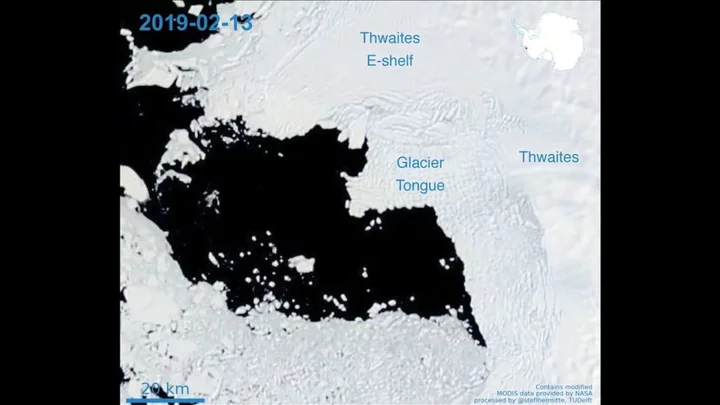
Scientists troubled by 'doomsday glacier' discovery
Scientists have been left shocked and worried by a recent discovery made beneath the Thwaites Glacier in Antarctica, otherwise known as the 'doomsday glacier.' The huge amount of ice has been destablised and has been reduced by nearly nine miles since the 1990s. It is believed to hold a large amount of water, that if it were to completely melt would raise sea levels by more than 2 feet around the globe and could unleash more water if neighbouring glaciers are disturbed. Now, new research carried out at the location in West Antarctica that deeper cracks are beginning to form on the shelf of the glacier potentially compromising its intergrity, as published in a study on the science journal Nature. Scientists used a robot named 'Icefin' to bore 2000 ft down below the glacier's surface to get a better look at what is going on beneath it by taking photos and videos as well as collecting valuable pieces of data about temperature and sea levels. What they found wasn't very reassuring. Although the rate of the melting wasn't as fast as they had originally feared the researched still painted a "very nuanced and complex picture." Speaking to CNN, lead researcher Peter Davis said: "The glacier is still in trouble. What we have found is that despite small amounts of melting there is still rapid glacier retreat, so it seems that it doesn’t take a lot to push the glacier out of balance." However, it wasn't all doom and gloom as robot creator and scientist Britney Schmidt of Cornell University, revealed that signs of life had been found on the glacier. She said: "To accidentally find them here in this environment was really, really cool. We were so tired that you kind of wonder like, ‘am I really seeing what I’m seeing?'. "You know because there are these little creepy alien guys (the anemones) hanging out on the ice-ocean interface. In the background is like all these sparkling stars that are like rocks and sediment and things that were picked up from the glacier. And then the anemones. It’s really kind of a wild experience." That being said, Oregon State University ice researcher Erin Pettit, who didn't work on the study believes that the findings are a cause for concern. She told Associated Press: "Thwaites is a rapidly changing system, much more rapidly changing than when we started this work five years ago and even since we were in the field three years ago. I am definitely expecting the rapid change to continue and accelerate over the next few years." Have your say in our news democracy. Click the upvote icon at the top of the page to help raise this article through the indy100 rankings.
2023-08-30 23:29

Part of the sun is broken and scientists are baffled
We don’t want to alarm anyone, but the sun is broken. A section of the sun has left the surface and begun circulating around the top of the star as if it were a huge polar vortex, and it’s not exactly clear why it’s happened. The observation was made possible thanks to the James Webb Space Telescope, and its no surprise that it piqued the interests of scientists everywhere. Tamitha Skov is a space weather physicist who regularly shares updates on social media, and she seemed incredibly excited about the latest developments. Sign up for our free Indy100 weekly newsletter “Talk about Polar Vortex! Material from a northern prominence just broke away from the main filament & is now circulating in a massive polar vortex around the north pole of our Star,” she wrote. “Implications for understanding the Sun's atmospheric dynamics above 55° here cannot be overstated!” Solar prominences consist of hydrogen and helium, and they extrude from the sun’s service releasing plasma. While there’s confusion around the cause of the phenomenon, it could be related to the reversal of the sun’s magnetic field, as well as the fact that something expected has been known to happen when the sun reaches a 55 degree latitude in every 11-year solar cycle. Solar physicist Scott McIntosh, who is the deputy director at the National Center for Atmospheric Research in Boulder, Colorado told Space.com: "Once every solar cycle, it forms at the 55 degree latitude and it starts to march up to the solar poles. “It's very curious. There is a big 'why' question around it. Why does it only move toward the pole one time and then disappears and then comes back, magically, three or four years later in exactly the same region?" Have your say in our news democracy. Click the upvote icon at the top of the page to help raise this article through the indy100 rankings.
2023-08-30 22:59
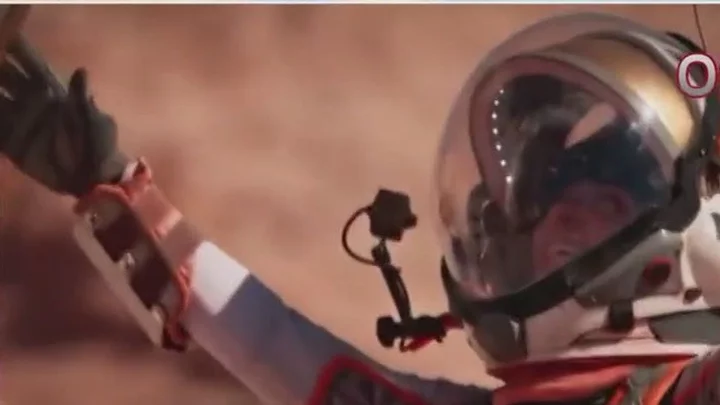
Scientists think there might be life hidden in underground caves on Mars
Scientists have theorised that if we are going to find life on Mars, it will be microbes and they will be living in caves below the surface. The Perseverance rover, NASA’s exploration robot on the Red Planet, is currently searching for signs of ancient life in the Jezero Crater. Scientists already know that there are so-called lava tubes on Mars, which some think could be large enough to shelter the first human astronauts from the cosmic radiation which is bombarding the planet. When these were formed, they thought conditions on Mars were more similar to those on Earth, with flowing water, an atmosphere and a warmer climate. One theory is that as conditions changed on the surface and Mars lost its magnetic field and atmosphere, life could have shifted underground. Daniel Viúdez-Moreiras from Spain’s National Institute for Aerospace Technology calculated that UV radiation levels would be about 2 percent of the radiation levels found at the surface. Fortunately, we have lava tubes here on Earth too, which could tell us what life could look like in similar conditions elsewhere in the Solar System. Hawai’i’s Mauna Loa volcano lava tubes were recently explored by NASA. Within them, life is sheltered from conditions on the surface. On Earth, that is a bad thing: we have sunlight and oxygen. But on Mars, where conditions are much harsher, that is a big advantage. “The microbes we found in Hawaii could be similar to microbes that once lived on Mars,” researcher Chloe Fishman explained to NASA following a trip to collect samples in April, “or even microbes that live there today.” The team brought back samples from the cave so as to sequence the genomes of the microbes they found there. And there are already plans to explore lava tubes on the Moon, too. So maybe, just maybe, they will hold the secret to life on Mars. Sign up to our free Indy100 weekly newsletter Have your say in our news democracy. Click the upvote icon at the top of the page to help raise this article through the indy100 rankings.
2023-08-30 19:56
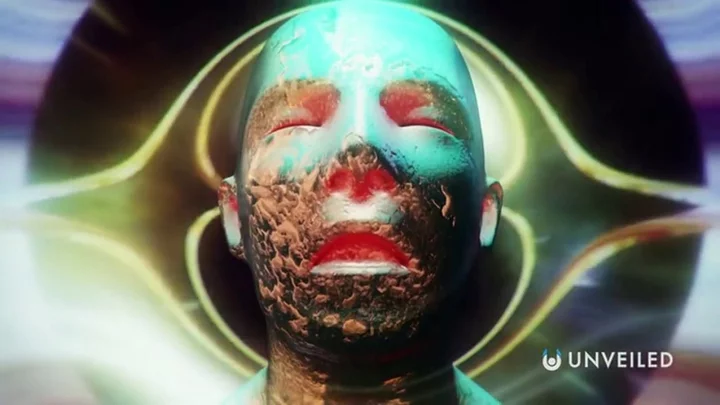
Near-death experience expert says he’s proven there is an afterlife ‘without a doubt’
One of life's unanswered questions that often lies in fear of the unknown is what happens when we die. Now, an American doctor, who has studied over 5,000 near-death experiences, claims there is "without a doubt" life after death. Radiation oncologist Dr Jeffrey Long from Kentucky started his Near-Death Experience Research Foundation back in 1998 and has collected personal recollections from people who have almost faced death. He defined a near-death experience as "someone who is either comatose or clinically dead, without a heartbeat, having a lucid experience where they see, hear, feel emotions, and interact with other beings." After years of "overwhelming" evidence, he has concluded: "There’s certainly an afterlife." Dr Long revealed in an essay for Insider that roughly 45 per cent suggested that "their consciousness separates from their physical body, usually hovering above," during their NDE. One account from a woman who fell unconscious while riding a horse told the doctor that "her consciousness travelled with her horse as he galloped back to the barn." When she woke up, she was able to "describe exactly what happened at the barn." Many others went on to claim that they felt as though they were "transported into another realm," where they saw a bright light and were greeted by deceased loved ones. Even children have described similar experiences. Dr Long candidly said he hasn't found any scientific explanations behind the experiences, adding: "I’ve read brain research and considered every possible explanation for NDEs. The bottom line is that none of them hold water." Previously, in a short film for BBC Ideas, Dr Kathryn Mannix, who specialises in palliative and end-of-life care suggested: "Dying is probably not as bad as you're expecting." She went on to compare death to "a process" and believes society should be open to the conversation about death and change how we speak about it. Sign up for our free Indy100 weekly newsletter Have your say in our news democracy. Click the upvote icon at the top of the page to help raise this article through the indy100 rankings.
2023-08-30 18:46
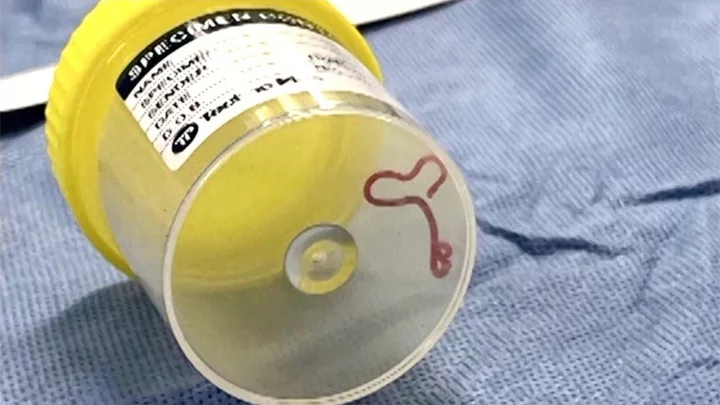
More than 1 billion people worldwide are infected with parasitic worms
After a live worm was found wriggling around in an Australian woman’s brain recently, you could be forgiven for thanking your lucky stars you don’t have a similar parasite living inside you. But it turns out the chances are much more likely than you might think. More than 1 billion people are thought to have threadworms, a type of invertebrate also known as the pinworm, as per a 2019 study by NCBI. Threadworms grow to around 1cm in length and are specific to human hosts. They infect the small intestine, make your bottom feel itchy and can be passed from person to person. They are a common type of infection in the UK, particularly in children under the age of 10. Threadworms are white and look like small pieces of thread – they are usually spotted in people’s poo. According to the NHS website, they can make people irritable and cause them to wake up at night. When things get really bad, they can cause weight loss. The woman in Australia’s worm, by contrast, was found in her brain, and surgeons needed to get it out manually. “Everyone [in] that operating theatre got the shock of their life when [the surgeon] took some forceps to pick up an abnormality and the abnormality turned out to be a wriggling, live 8cm light red worm," said infectious diseases doctor Sanjaya Senanayake, according to the BBC. If you get threadworms, you won’t need to have brain surgery, fortunately. You can buy medicine (mebendazole) for threadworms from pharmacies, according to NHS online. This is usually a chewable tablet or liquid you swallow. The medicine kills the threadworms, but it does not kill the eggs. Eggs can live for up to 2 weeks outside the body. There are other types of worms you can catch, however. Tapeworms, roundworms and hookworms are all relatively common parasites that you can catch from eating raw or undercooked meat. They can also be caught from inadvertently touching infected poo. Roundworms look more like earthworms, tapeworms are long, pale yellow and flat and hookworms, somewhat horrifically, cause a red, worm-shaped rash beneath the skin. Vincent Ho, associate professor and clinical academic gastroenterologist at Western Sydney University in Australia, said that there are four things you can do to avoid these nasty little critters. “Avoid undercooked or raw pork. Freezing meat first may reduce risks (though home freezers may not get cold enough) and it must be cooked to a high internal temperature. Avoid pork if you are travelling in places with poor sanitation,” he said in an article for The Conversation. “Avoid jumping or diving into warm fresh bodies of water, especially if they are known to carry Naegleria fowleri. Although only a handful of cases are reported each year, you should assume it’s present. “Practise good hand hygiene to reduce the risk of rare and common infections. That means washing hands thoroughly and often, using soap, scrubbing for at least 20 seconds, rinsing and drying well. Clip and clean under fingernails regularly. “To avoid soil-borne parasites, wear shoes outside, especially in rural and remote regions, wash shoes and leave them outside.” Sign up to our free Indy100 weekly newsletter Have your say in our news democracy. Click the upvote icon at the top of the page to help raise this article through the indy100 rankings.
2023-08-29 23:26

Shark that can live for 500 years found by fishermen leaving scientists baffled
Scientists are shocked having found a shark normally found deep in the Arctic, 4,000 miles away in the warm Caribbean. According to findings published in the Marine Biology journal, the Greenland shark turned up off the coast of Belize in Central America while a team of researchers were out on a boat catching and tagging tiger sharks. Devanshi Kasana, a PhD student at Florida International University, was part of the crew working with local fishermen at the time when she realised that a particular fish on the end of their fishing lines looked like a "rather sluggish creature". She added: "At first, I was sure it was something else, like a six-gill shark that are well known from deep waters off coral reefs. I knew it was something unusual and so did the fishers, who hadn’t ever seen anything quite like it in all their combined years of fishing.” Kasana took a photo of the animal and sent it to her advisor, who said it appeared to be a Greenland shark, which was soon confirmed by experts on the specific species. Another expert thought it might be a hybrid between a Greenland and a Pacific sleeper shark. Omar Faux, a fisherman on the boat, said: "I am always excited to set my deep water line because I know there is stuff down there that we haven’t seen yet in Belize, but I never thought I would be catching a Greenland shark." This is the first time that the large shark has been seen in the western Caribbean, off the world's second-largest coral reef, according to the university. The half-blind Greenland shark is rarely seen and is the longest-living vertebrae animal known, with some age estimates between 250 and 500 years old. Weird... Sign up to our free Indy100 weekly newsletter Have your say in our news democracy. Click the upvote icon at the top of the page to help raise this article through the indy100 rankings.
2023-08-29 19:56
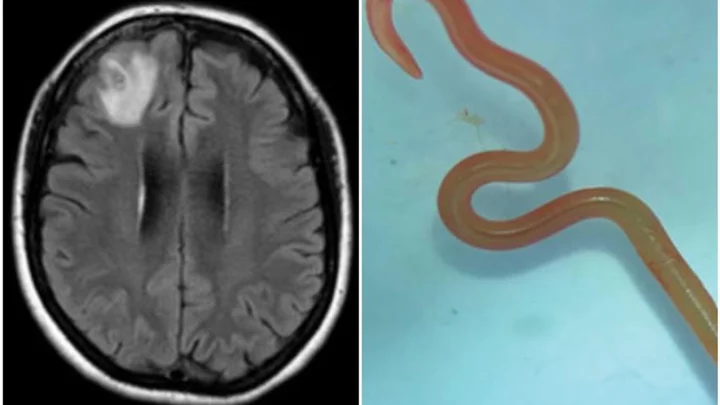
Live worm discovered in woman's brain in a worrying world first
A worm has been found living inside a woman’s brain, in a horror-movie-style world first. Doctors in Canberra, Australia, were left stunned after they pulled the 8cm (3in) parasite from the patient’s damaged frontal lobe tissue during surgery last year. "Everyone [in] that operating theatre got the shock of their life when [the surgeon] took some forceps to pick up an abnormality and the abnormality turned out to be a wriggling, live 8cm light red worm," said infectious diseases doctor Sanjaya Senanayake, according to the BBC. "Even if you take away the yuck factor, this is a new infection never documented before in a human being." Senanayake and his colleagues believe the parasite could have been in there for up to two months. The patient, a 64-year-old woman from New South Wales, was first admitted to her local hospital in late January 2021 after suffering three weeks of abdominal pain and diarrhoea, followed by a constant dry cough, fever and night sweats, The Guardian reports. By 2022, her symptoms extended to forgetfulness and depression, and she was referred to Canberra Hospital, where an MRI scan of her brain revealed “abnormalities” that required surgery. “The neurosurgeon certainly didn’t go in there thinking they would find a wriggling worm,” Senanayake told the paper. “Neurosurgeons regularly deal with infections in the brain, but this was a once-in-a-career finding. No one was expecting to find that.” The team at the hospital sent the worm to an experienced parasite researcher who identified it as an Ophidascaris robertsi. This type of roundworm is commonly found in carpet pythons – non-venomous snakes that are ubiquitous across much of Australia. Writing in the journal Emerging Infectious Diseases, Mehrab Hossain, a parasitologist, said she suspected that the patient became an "accidental host" to the worm after cooking with foraged plants. The 64-year-old was known to have often collected native grasses from around her lakeside home, Senanayake told The Guardian. He and his co-workers have concluded that the woman was probably infected after a python shed eggs from the parasite via its faeces into the grass. By touching the plants, she may then have transferred the eggs into her own food or kitchen utensils. Fortunately, the unlucky and unique patient is said to be making a good recovery. However, Senanayake told the BBC that her case should serve as an important warning to society more broadly. "It just shows as a human population burgeons, we move closer and encroach on animal habitats. This is an issue we see again and again, whether it's Nipah virus that's gone from wild bats to domestic pigs and then into people, whether its a coronavirus like Sars or Mers that has jumped from bats into possibly a secondary animal and then into humans,” he said. "Even though Covid is now slowly petering away, it is really important for epidemiologists… and governments to make sure they've got good infectious diseases surveillance around." Sign up for our free Indy100 weekly newsletter Have your say in our news democracy. Click the upvote icon at the top of the page to help raise this article through the indy100 rankings.
2023-08-29 15:51
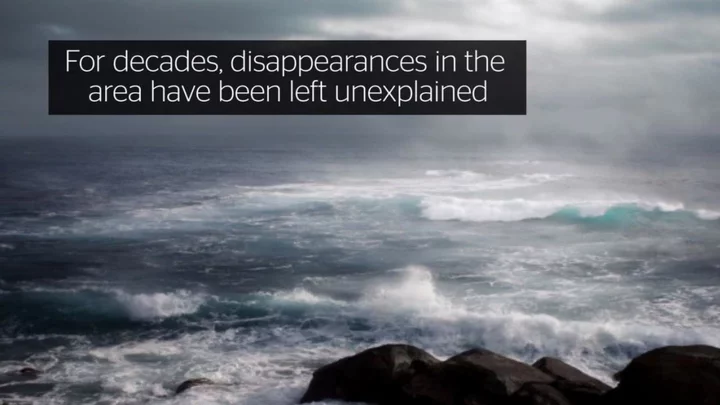
Expert uses science to explain what causes so many Bermuda Triangle disappearances
One expert believes he’s “solved” the mystery of the Bermuda Triangle. Channel 5’s documentary, Secrets of the Bermuda Triangle, featured an interview with mineral prospector Nick Hutchings. Hutchings said that geology could explain the disappearances of planes and boats. According to the National Oceanic and Atmospheric Administration (NOAA), the Bermuda Triangle is in the western part of the North Atlantic Ocean and “has captured the human imagination with unexplained disappearances of ships, planes, and people.” The region has also been referred to as ‘The Devil’s Triangle’, with reports of disappearances in the area date as far back as the middle of the 19th century. Reports of distress signals or wreckages resulted in crews and passengers never being heard from again. Many have come up with conspiracy theories in an attempt to explain the bizarre occurrences that happen in and around the Bermuda Triangle. Some believe the lost city of Atlantis is responsible, others think it has something to do with rogue waves, and few go as far to suggest it is a portal to another space and time. But Hutchings has a different theory. This one involves rocks. “Bermuda’s basically a sea mountain - it’s an underwater volcano. 30 million years ago, it was sticking up above sea level,” Hutchings explained. “It has now eroded away and we’re left with the top of a volcano. We have a few core samples, which have magnetite in them. It’s the most magnetic naturally occurring material on Earth.” Using only a small piece of rock and a compass, Hutchings conducted an experiment during the documentary to demonstrate what this meant for ships sailing through the area. When the compass was passed over the rock its needle went berserk, ultimately resulting in the navigational device being completely useless. “You can just imagine the ancient mariners sailing past Bermuda,” he explained. “It would be very disconcerting.” In other words - people travelling through simply got lost. Whilst the Bermuda Triangle may seem to be this mysterious location, scientist at Sydney University, Karl Kruszelnicki, claims the percentage of missing planes and boats is similar to any other high-traffic part of the ocean. Sign up to our free Indy100 weekly newsletter Have your say in our news democracy. Click the upvote icon at the top of the page to help raise this article through the indy100 rankings.
2023-08-29 00:29
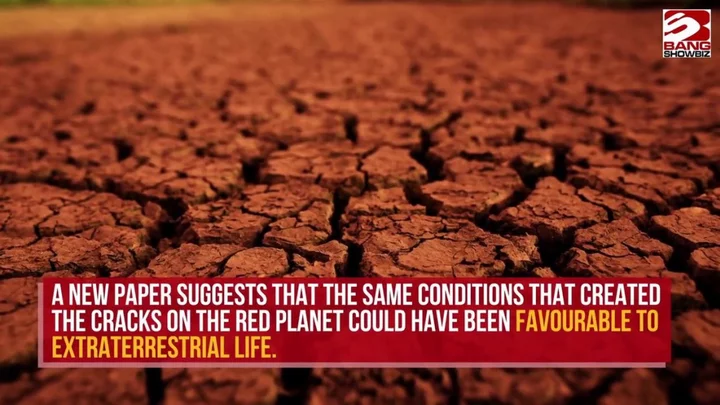
Material discovered on Mars would be ’signs of life’ if found on Earth
A Nasa scientist has said chemicals found on Mars would be considered signs of ancient life if they were found on Earth, leading to suggestions the Red Planet could potentially have harboured life. Dr Michelle Thaller said: “On Mars we see chemistry that on Earth, if it were here, we would say is due to life. “But the question is, how well do we understand Mars and are we being fooled by something?” It’s not a done deal, of course. Signs of ancient life that we find regularly on Earth may not mean the same thing elsewhere, particularly with the vastly different conditions between the two planets. Dr Thaller told The Sun she is certain there is life out there in our solar system, but did not reveal the exact chemical substance that had been found. Nasa has previously found methane on Mars, which it said “could have supported ancient life”, and the organisation has also revealed plans to look for amino acids that haven’t yet been destroyed by space radiation. Organic chemicals like amino acids are used by archaeologists to determine whether life was present. A blog post from the US space agency said: “Amino acids can be created by life and by non-biological chemistry. “However, finding certain amino acids on Mars would be considered a potential sign of ancient Martian life because they are widely used by terrestrial life as a component to build proteins. “Proteins are essential to life as they are used to make enzymes which speed up or regulate chemical reactions and to make structures.” Alexander Pavlov of Nasa’s Goddard Space Flight Center in Greenbelt, Maryland, added: “Our results suggest that amino acids are destroyed by cosmic rays in the Martian surface rocks and regolith at much faster rates than previously thought. “Current Mars rover missions drill down to about two inches (around five centimeters). “At those depths, it would take only 20 million years to destroy amino acids completely.” That may sound like a long time, but Nasa is looking for life that is billions of years old, because scientists think Mars would have been more like Earth back then. Dr Thaller said it was important not to actually say there were signs of life until there is 100 per cent confirmation. “The solar system may be teeming with simple life, microbial life. “We just have to get that 100% certainty to say that we found it and we don’t have that yet.” Sign up to our free Indy100 weekly newsletter Have your say in our news democracy. Click the upvote icon at the top of the page to help raise this article through the indy100 rankings.
2023-08-27 16:24
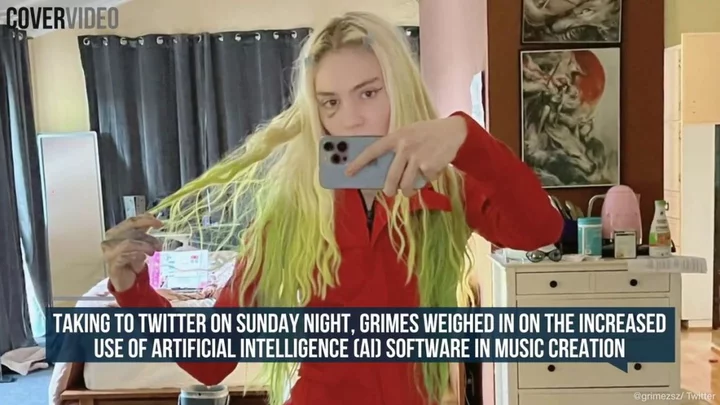
AI in music: The top artists are are for and against the technology
With the rise of AI, we've all seen how powerful this new technology can be particularly when it comes to music. As a result, people have been using AI to perfectly replicate the singing voices of different artists such as Drake, Ariana Grande, Billie Eilish, Taylor Swift and Harry Styles in order to make AI covers of different songs. For example, there is a viral AI cover of Harry Styles singing in a duet with Taylor Swift on her track Style which fans have been going crazy about. While AI can also be used to create deep fakes of celebrities too - where the celeb's face is digitally imposed on someone else's body which is often used to spread misinformation or for malicious intent. But what do artists think about this issue? Here are the celebrities who have spoken out so far on the topic of AI: Drake An AI song called "Heart on My Sleeve" that used Drake's and the Weeknd's voices went viral before being taken down by music streaming services. While Drake himself hasn't commented on all the AI songs that have been created, he did express his disapproval of the practice after the rapper responded to an AI-generated cover of him rapping Ice Spice’s “Munch”, writing: “This is the final straw AI.” Grimes Grimes has expressed enthusiasm towards the new AI-generated songs - and has told her fans they can use her voice to create their own tracks. Taking to Twitter, she shared a New York Times article about the viral AI-generated song using Drake and The Weeknd's voice. She wrote: "I'll split 50 per cent royalties on any successful AI-generated song that uses my voice. Same deal as I would with any artist I collab with. Feel free to use my voice without penalty. I have no label and no legal bindings." "I think it's cool to be fused w a machine and I like the idea of open-sourcing all art and killing copyright," she added. Though, later she did add a clarification on the platform as to what circumstances would cause her to get certain AI songs taken down for copyright - where "rly rly toxic lyrics," are used with her voice. "Ok hate this part but we may do copyright takedowns ONLY for rly rly toxic lyrics w grimes voice: imo you'd rly have to push it for me to wanna take smthn down but I guess plz don't be *the worst*. as in, try not to exit the current Overton window of lyrical content w regards to sex/violence. Like no baby murder songs plz," she wrote. "I think I'm Streisand effecting this now but I don't wanna have to issue a takedown and be a hypocrite later. ***That's the only rule." Rly don't like to do a rule but don't wanna be responsible for a Nazi anthem unless it's somehow in jest a la producers I guess "- wud prefer avoiding political stuff but if it's a small meme with ur friends we prob won't penalize that. Probably just if smthn is viral and anti abortion or smthn like that. Grimes added: "Rly rly don't like adding rules so I apologize but this is the only thing." Most recently, the singer and producer has shared a guide on how to do this, and shared the link in a tweet: "HOW TO MAKE MUSIC FEAT GrimesAI - we can distribute it for you and you can earn royalties from your work." Billie Eilish During an appearance on The Late, Late Show with James Corden back in May this year, Billie Eilish shared her thoughts on AI. "I feel like my approach is not as optimistic, I'm a little bit scared of it," she admitted. "I'm a little scared of what someone could create of me doing something with it." Eilish added: "Scary, scary to me, it just looks so real," as she went on to note how it's "One of the most impressive things I've encountered in my life." The singer's comments come after deepfake porn' of singer Eilish was promoted on people's TikTok in December last year. Sign up to our free Indy100 weekly newsletter Have your say in our news democracy. Click the upvote icon at the top of the page to help raise this article through the indy100 rankings.
2023-08-26 13:23
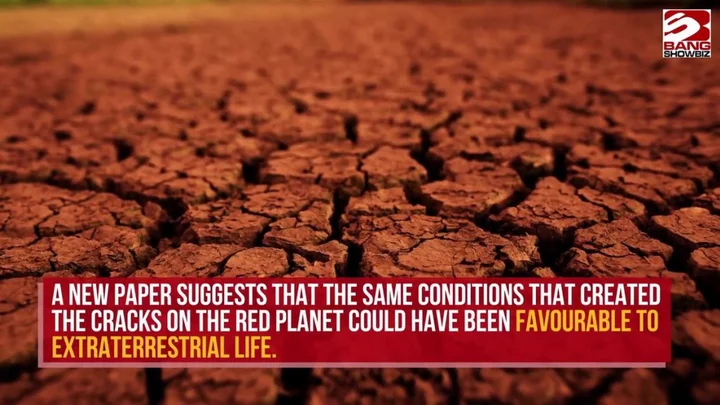
Simulation discovers what personality traits you would need to go to Mars
If the thought of jetting off to Mars to live doesn’t scare you enough, imagine what it would be like going with people whose personalities you cannot stand. To avoid that happening, scientists have come up with a simulation that can determine the right and, importantly, wrong, personality types to send up to colonize Mars. 28 different simulations of colonies on Mars were run as part of the study to establish which type of people stood the best chance of settlement and survival. While the study was published on pre-print server arXiv, it had not yet been peer-reviewed. The study worked on the assumption that there would already be some kind of infrastructure in place, including power, food, air and water being locally produced and available. As part of the model, there would also be regular supply deliveries from Earth. Those behind the simulation gave each agent their own attributes, skills and personalities and let the simulation run as they interacted, socialised and problem-solved together. In the paper, the researchers explained: “Each agent is granted skills associated with their civilian and military occupational specialities consistent with NASA’s Human Factors and Behavioral Performance Element research.” Different personality types included: “Agreeables” – they score low on levels of competitiveness and aggression. “Neurotics” – these people are highly aggressive, competitive, and are much less able to handle routine change or boredom. “Reactives” – they tend to have a “competitive interpersonal orientation”. “Socials” – people who are extroverted and require a lot of social interaction. As for the groups themselves, the numbers within each simulation differed with the lowest amount being 22 individuals. The study found that the presence of neurotics made the team have a worse chance of survival and that these people in particular “suffered during life on the colony”. The researchers: “Martians with the neurotic psychology and a high coping capacity benefit the least from interaction with other Martians, and are penalized the most if they have a low coping capacity. “Our results suggest that this effect is a driver of the Martian population decline, and once minimized or removed, can produce a stable settlement.” A lot to process there if you identify as neurotic. Sign up to our free Indy100 weekly newsletter Have your say in our news democracy. Click the upvote icon at the top of the page to help raise this article through the indy100 rankings.
2023-08-25 23:56
